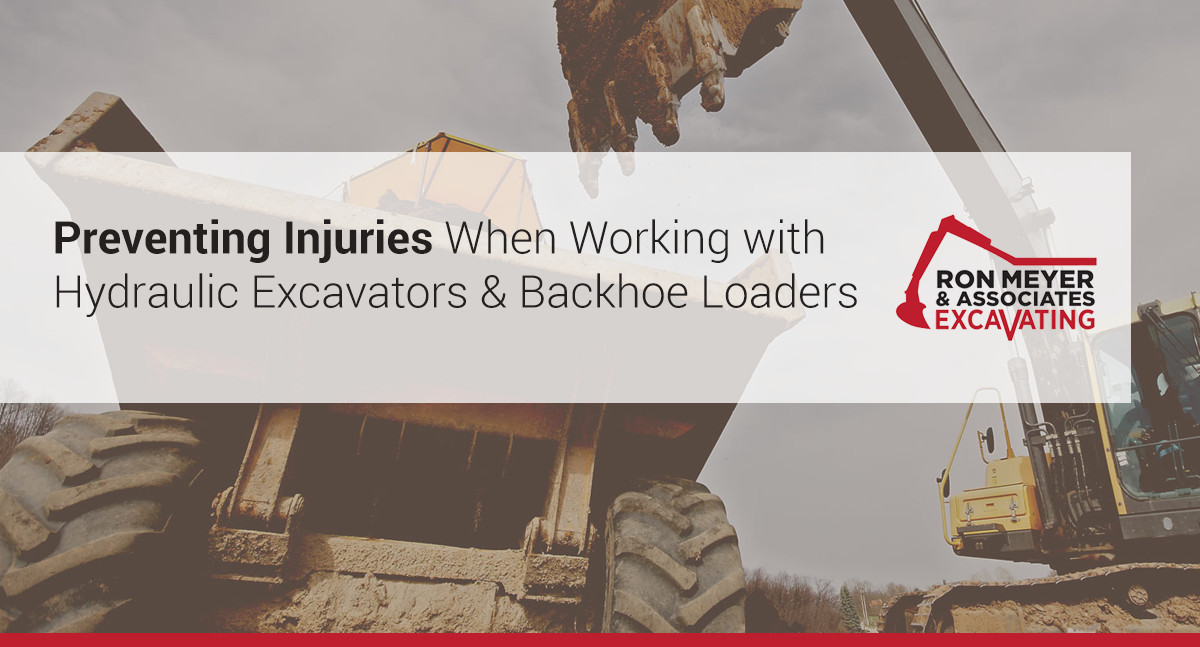
Workers who operate or work near hydraulic excavators and backhoe loaders are at risk of being struck by the machine or its components or by excavator buckets that detach from the excavator stick. NIOSH recommends that injuries and deaths be prevented through training, proper installation and maintenance, work practices, and personal protective equipment.
Employers should take the following steps to protect workers from injury while working with excavators or backhoe loaders.
Site Set-Up
- Contact local utilities and other responsible parties to locate overhead and underground utility lines before beginning work. Avoid working near overhead power lines. If you must work near them, develop a plan to avoid contact and to follow OSHA regulations for minimum clearance.
- Do not permit hydraulic excavators or backhoes to be operated on grades steeper than those specified by the manufacturer.
- Make sure that workers position machinery at a safe distance from excavations such as trenches.
Equipment Operators
- Train equipment operators in the proper use of the equipment they are assigned to operate. Be sure to follow manufacturer’ specifications and recommendations.
- Continually evaluate safety programs to address changing conditions at the worksite.
- Clearly identify and label all machine controls and make sure that the manufacturers’ safety features are working.
- Install and maintain equipment attachments and their operating systems according to manufacturers’ specifications.
- Securely latch attachments (such as quick-disconnect buckets) before work begins.
- Follow the manufacturer’s instructions for using positive locks on quick-disconnect equipment.
- Train operators to conduct visual and operational checks on all machine systems and operating controls before working the machine.
- Make frequent visual inspections of quick-disconnect systems – especially after changing attachments.
- Use the ROPS and seat belts supplied by the manufacturer. Do not remove the ROPS.
- Do not exceed load capacities when lifting materials.
- Instruct operators to lower the boom to a safe position with the bucket on the ground and turn off the machine before stepping off for any reason.
Other Site Workers
- Train site workers to recognize and avoid unsafe conditions and to follow required safe work practices that apply to their work environments.
- Make all workers on the site aware of the machines’ established swing areas and blind spots before the operator works the machine. Keep workers on foot outside these areas by marking them with rope, tape, or other barriers.
- Before each work shift begins, review and confirm communications signals between machine operators and workers on foot.
- Instruct machine operators to keep the bucket as close to the ground as possible when workers are attaching loads or hoisting.
- Keep workers outside the hydraulic excavator swing areas and clear of attachments when using the machines for hoisting materials. Do not allow workers to stand under suspended loads or suspended machine components such as the boom, arm, or bucket.
- Do not permit workers on foot to approach the hydraulic excavator or backhoe loader until they signal the operator to shut down the machine and receive acknowledgment from the operator.
- Use spotters or signal persona around operating equipment when necessary.
- Never permit workers to ride in or work from excavator or backhoe loader buckets.
- Provide appropriate personal protective equipment and make sure that workers use and maintain it.
For more information, visit the CDC website or download the NIOSH publication.
At Ron Meyer & Associate Excavating, Inc, we’ve been providing underground and commercial construction to private and commercial businesses for 40+ years. As the general contractor or subcontractor, our experienced foremen, equipment operators, pipe layers, truck drivers and well-maintained equipment fleet make us an undeniable choice for your excavating services. Let’s talk about your project!
Sources:
- https://www.cdc.gov/niosh/docs/wp-solutions/2004-107/pdfs/2004-107.pdf
- https://www.cdc.gov/niosh/docs/wp-solutions/2004-107/default.html

As 45 years of experience as an underground/site contactor and a third generation contractor, Ron takes time to go through each individual project with the supervisor and is responsible for all scheduling and equipment logistics. He’s also involved in all troubleshooting for projects.